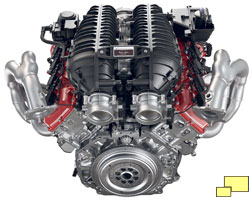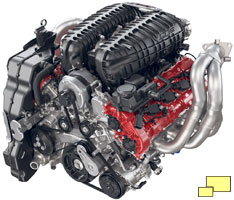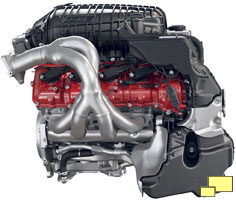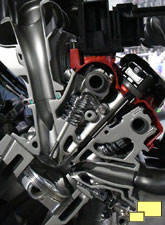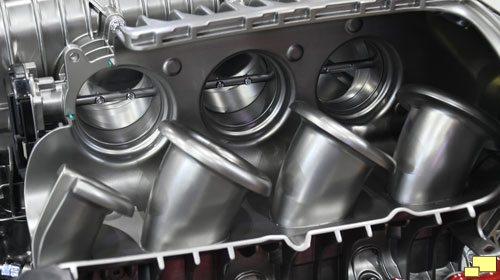Corvette Generations:
C1 C2 C3 C4 C5 C6 C7 C8
Corvette: Year by Year
1953 1954 1955 1956 1957 1958 1959 1960 1961 1962 19631964 1965 1966 1967 1968 1969 1970 1971 1972 1973 1974
1975 1976 1977 1978 1979 1980 1981 1982 1983 1984 1985
1986 1987 1988 1989 1990 1991 1992 1993 1994 1995 1996
1997 1998 1999 2000 2001 2002 2003 2004 2005 2006 2007
2008 2009 2010 2011 2012 2013 2014 2015 2016 2017 2018
2019 2020 2021 2022 2023 2024 2025
LT6: The New Corvette C8 Performance Benchmark

Flat Plane Crankshaft
With the main event regarding the C8 Z06 was the LT6 engine, the big news within the engine is the flat plane crankshaft.
Corvette racing and their fans had plenty of experience with the flat plane crankshaft; it has been used in the C8.R racing engine for about two years prior.
The sound made by the LT6, which can be heard in the film that is part of the Z06 Reveal, is absolutely glorious. It has a high pitched wail which is in the nature of flat plane crank engines. This is a departure from the traditional V8 muscle car, which has a traditional rumble.
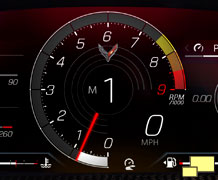
Why use a flat plane crankshaft? Flat plane crankshafts have excellent balance characteristics, so heavy counterweights, necessary in cross plane crankshafts, are not necessary. The result is that flat plane crankshafts can carry higher RPMs and higher RPMs mean more horsepower.
The redline for the LT6 engine is an astounding 8,600 RPM with peak power - 670 horsepower - at 8,400 RPM. GM engineers admitted that design goal was based on the C7 Z06 output of 650 hp; having less power than the previous generation would have been seen as a failure by many. What is also impressive about the C7 Z06 vs. the C8 Z06 is that the C7 had more displacement (6.2 Liters vs. 5.5 Liters) AND the C7 rendition featured supercharging. Ponder that if you will for a moment. A larger engine with supercharging putting out less than a smaller engine, normally aspirated. The LT6 is truly impressive.
Ferrari has been using flat plane crankshafts in their road cars for over 12 years but they were limited to 4.5 liters or 275 cubic inches. Ford has been equipping Shelby Mustangs with 5.2 liter (317 cubic inches) flat plane crankshaft engines
Dustin Gardner (Assistant Chief Engineer, LT6 Engine) discusses the finer points of the LT6 engine and it's development.
LT6 Big News, Part Two Also on the specifications list is the double overhead camshafts and four valves per cylinder contained in the LT6. The intake valves are titanium and exhaust valves are sodium filled. The configuration was last seen on the ZR-1 Corvette C4, which was available from 1990 to 1995.
The heads feature CNC-machined combustion chambers and intake ports. Direct acting roller finger followers riding on the camshafts are shimmed during assembly. GM claims the process to be such that even though the LT6 is equipped with mechanical lifters, no adjustment will be necessary for the life of the engine. The valves are supported by dual springs in an effort to avoid high RPM valve float.
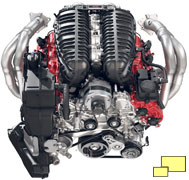 Right: The LT6 features dual plenums which are connected by three valves (above). The front two valves are tied together and the rear one is independent. Their opening at various RPMs optimize efficiency and power. Changing the opening changes the volume and the way the pressure waves interact.
Right: The LT6 features dual plenums which are connected by three valves (above). The front two valves are tied together and the rear one is independent. Their opening at various RPMs optimize efficiency and power. Changing the opening changes the volume and the way the pressure waves interact.





